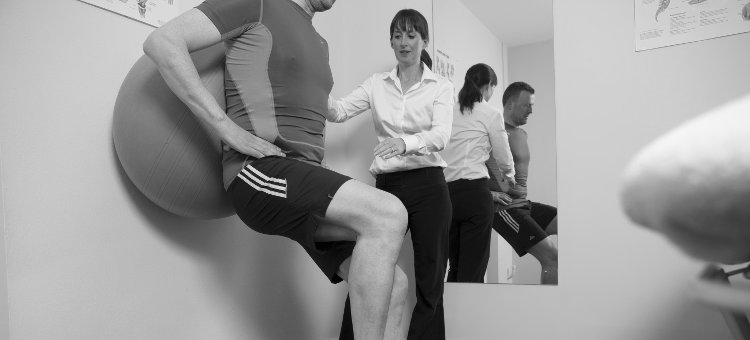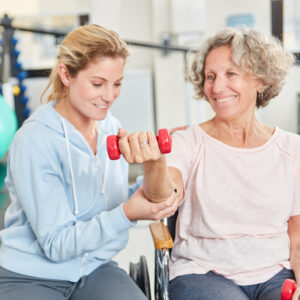
The shoulder complex is made up of 4 joints; the most well known of which is a ball and socket shaped joint. The anatomy of the complex allows it a great degree of movement. This is very useful to allow us to position the rest of the arm for specific tasks e.g. catch a ball, use a computer mouse, brush our hair, put on a seat belt etc. The downside of having so much movement available at the shoulder is that a more convoluted control system is required, made up of ligaments and muscles and this complexity of this system means that the shoulder is more vulnerable to injury than the other ball and socket joint in the body; the hip.
As Clinical Specialists in Musculoskeletal Physiotherapy, we specialise in the assessment and treatment of problems at the shoulder; such as rotator cuff injuries, frozen shoulder or overuse injuries. We can also design evidence-based rehabilitation programmes post shoulder fracture or dislocation.
Rotator cuff injuries
The rotator cuff is a group of 4 muscles and tendons in the shoulder that act to both stabilise and move the ball and socket joint of the shoulder. They can be injured due to a variety of reasons such as trauma, overuse, muscle imbalance around the shoulder complex, poor ergonomics, poor posture or stiffness of the upper spine etc.
Symptoms include pain on specific shoulder movements (often overhead) and with specific tests that target these muscles. The pain may be as a result of pinching of one of the rotator cuff tendons or even a tendon tear.
Your physiotherapy treatment will depend on your specific problem but may include: manual therapy, an exercise programme, analysis and modification of your training regime/ ergonomics/ activities of daily living. Sometimes an MRI or surgery is required, and onward referral to a shoulder specialist will be carried out where appropriate.
Frozen Shoulder
Also known as Adhesive Capsulitis, this is a painful condition whereby all shoulder movements become increasingly restricted. Thankfully, the natural course of a frozen shoulder is that it does get better with time but often it can take up to 2 years to resolve.
However, physiotherapy is a crucial part of the recovery process- in regaining normal movement and function of the shoulder. An injection in the shoulder can be helpful in the early stages of a frozen shoulder along with a physiotherapy programme.
[/wptabcontent]
Fracture
A fracture is the medical term for a broken bone. Trauma to the shoulder (like a fall on an outstretched hand) may cause a fracture, which may or may not require surgery. Either way, as soon as your orthopaedic consultant deems that you are ready, you will need to start physiotherapy for your shoulder to restore normal movement, strength and function with a progressive programme of rehabilitation.
Dislocation
This may occur in the shoulder due to significant trauma or more easily, if hypermobility (too much movement) is present as a result of congenital laxity. Physiotherapy is crucial to restoring normal strength and stability in your shoulder to prevent recurrence.
Sometimes surgery is required in cases of repeat dislocation, after which you will need post operative physiotherapy to restore normal movement, strength and function with a progressive rehabilitation programme.









